Cuban Artists – A Kaleidoscopic World of Creativity
In the vibrant tapestry of global artistic expression, the contributions of famous artists from Cuba have woven a rich narrative within the realm of Cuban art. Renowned for their unique perspectives and boundless creativity, the brushstrokes of famous Cuban painters have left an indelible mark on the canvas of art history. From the colonial influences that shaped early Cuban paintings to the dynamic and evolving landscape of modern Cuban art, the journey of art from Cuba reflects the island nation’s complex history, cultural diversity, and resilience. This article delves into the captivating world of Cuban art, exploring the masterpieces, movements, and 13 pivotal figures that have defined the trajectory of artistic expression within this Caribbean enclave. Join us on a visual journey through the kaleidoscope of Cuban paintings, uncovering the nuances and narratives that make up the captivating history of modern Cuban art.
Famous Artists from Cuba
Embarking on a visual odyssey through the annals of artistic brilliance, this section serves as a gateway into the kaleidoscopic world of Cuban creativity. Here, we delve into the lives and legacies of visionaries who have shaped the narrative of Cuban art, each brushstroke and sculpted form echoing the nuanced stories of a nation. From the early pioneers who navigated colonial influences to the contemporary trailblazers pushing the boundaries of expression in modern Cuban art, this section unveils the multifaceted journey of renowned artists who have left an indelible mark on the global artistic landscape. Join us as we explore the vibrant tapestry woven by these luminaries, whose works transcend borders and illuminate the cultural richness of Cuba’s artistic heritage.
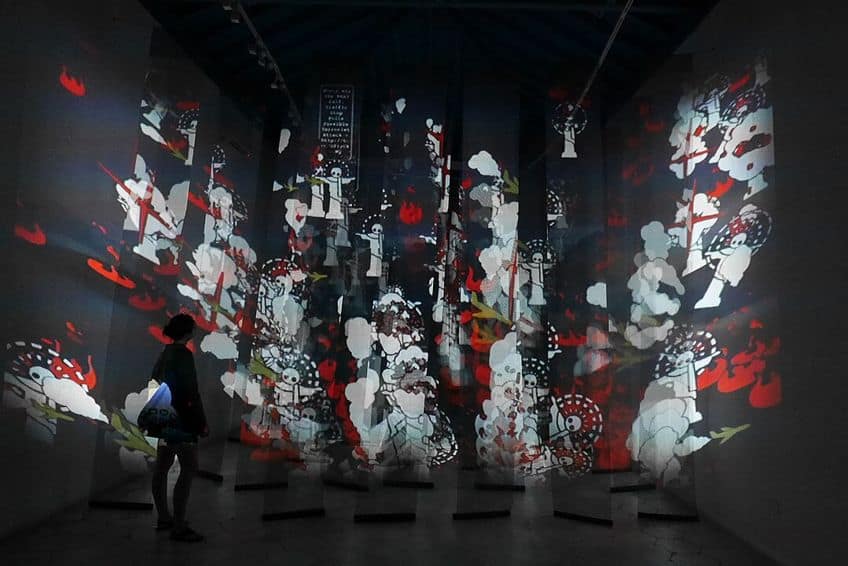
Amelia Peláez (1896 – 1968)
| Date of Birth | 5 January 1896 |
| Date of Death | 8 April 1968 |
| Place of Birth | Yaguajay, Cuba |
| Nationality | Cuban |
| Art Movement | Vanguardia (Cuban Modernist Movement) |
| Mediums Used | Painting and pottery |
| Famous Artworks | Naturaleza Muerta (Unknown) |
Amelia Peláez, a pioneering figure in the annals of Cuban art, is celebrated for her transformative contributions to the Vanguardia movement and her enduring impact on the nation’s cultural heritage. Born on January 5, 1896, in Yaguajay, Cuba, Peláez’s artistic journey unfolded against the backdrop of significant socio-political shifts. Melding elements of Cubism and Surrealism with her own Cuban identity, she crafted a distinctive visual language that resonates with a profound sense of national pride. One of her most renowned works, Naturaleza Muerta (Unknown), exemplifies Peláez’s mastery of form and color. In this masterpiece, vibrant hues and intricate patterns converge to depict a tropical exuberance, encapsulating the essence of Cuba’s lush landscapes and cultural vitality.
Peláez’s enduring legacy lies not only in her artistic prowess but in her role as a trailblazer, paving the way for subsequent generations of Cuban artists to explore and celebrate the rich tapestry of their heritage through art.
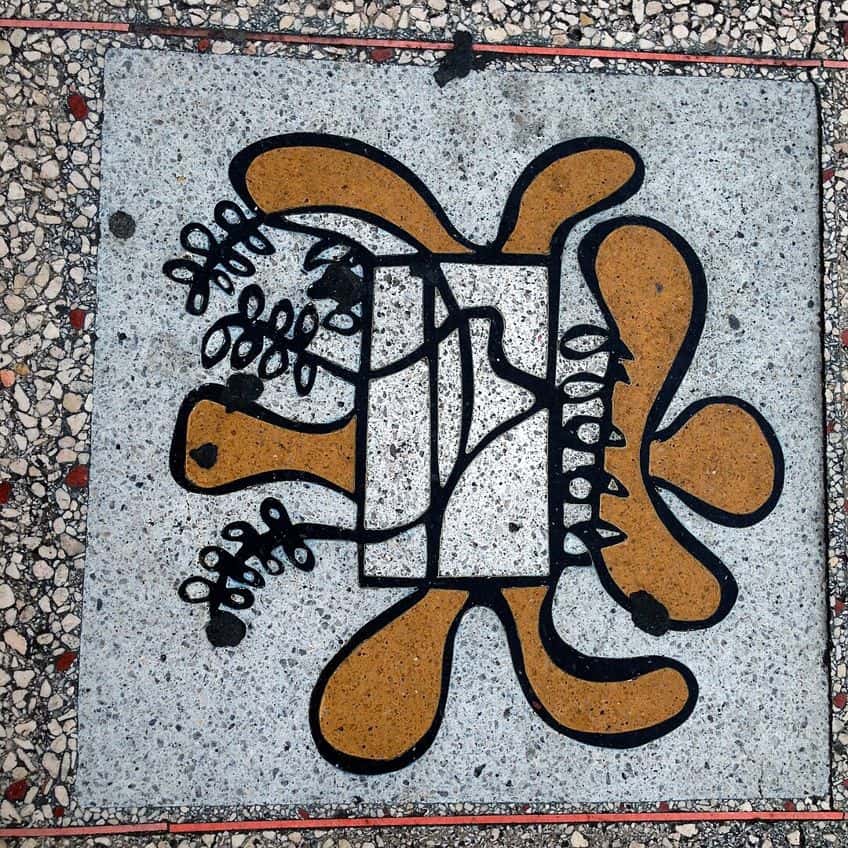
Wifredo Lam (1902 – 1982)
| Date of Birth | 8 December 1902 |
| Date of Death | 11 September 1982 |
| Place of Birth | Sagua La Grande, Cuba |
| Nationality | Cuban |
| Art Movement | Afro-Cuban Modernism and Surrealism |
| Mediums Used | Painting |
| Famous Artworks | The Jungle (1943) |
Wifredo Lam, a luminary in the tapestry of 20th-century art, emerges as a pivotal figure in the realm of Cuban and Surrealist painting. Born in Sagua La Grande, Cuba, in 1902, Lam’s artistic journey is a testament to the transcendent power of cultural fusion and personal exploration. As a progenitor of the Afro-Cuban modernist movement, Lam’s oeuvre navigates the intersection of his Afro-Chinese heritage, European avant-garde influences, and the spiritual essence of his native Cuba. One of his most iconic works, The Jungle (1943), stands as a magnum opus, encapsulating Lam’s synthesis of symbolic imagery and primal forms. In this masterpiece, Lam weaves a dense visual narrative, where hybrid figures and mythic creatures evoke the complex interplay between humanity and the natural world.
Through his profound artistic language, Wifredo Lam not only reshaped the trajectory of Cuban art but also contributed a unique and enduring voice to the global conversation on identity, colonialism, and the universal human experience.
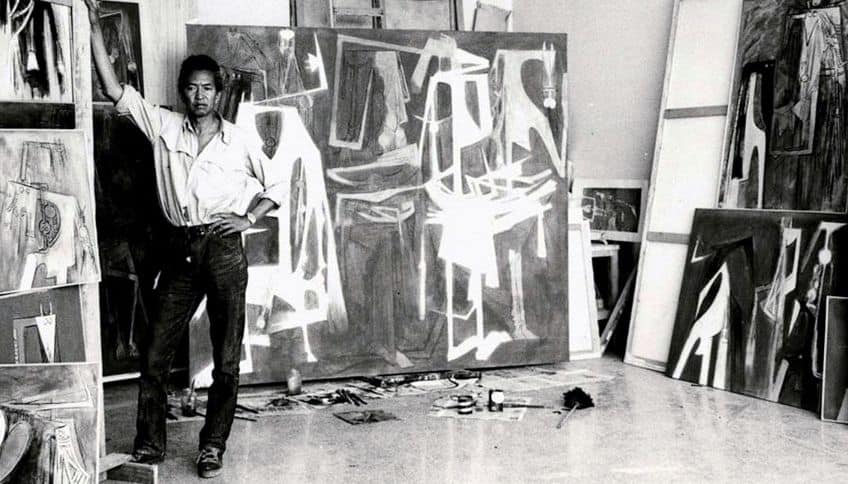
Hilda Vidal Valdés (1941 – Present)
| Date of Birth | 13 August 1941 |
| Age | 82 years old |
| Place of Birth | Havana, Cuba |
| Nationality | Cuban |
| Art Movement | Cuban Modernism |
| Mediums Used | Painting |
| Famous Artworks | Lucidez perversa de la nostalgia (Perfect lucidity of nostalgia) (2016) |
Hilda Vidal Valdés, a famous artist from Cuba to know, etches her place in history through a captivating exploration of form, color, and the human experience. Born in Havana, Cuba, Vidal Valdés’s artistic journey unfolds as a dynamic dialogue between tradition and innovation. As a trailblazer in the Cuban Modernist movement, her work reflects a synthesis of diverse influences, seamlessly blending avant-garde sensibilities with a profound connection to her cultural roots. One of her most celebrated pieces, Lucidez Perversa de la Nostalgia (Perfect Lucidity of Nostalgia, 2016), encapsulates the essence of Vidal Valdés’s artistic prowess. This masterpiece, a kaleidoscope of vibrant hues and abstract forms, transcends the canvas to evoke a sensory experience that mirrors the radiant energy of the Cuban landscape.
Hilda Vidal Valdés’s enduring legacy lies not only in her mastery of Modernist aesthetics but also in her ability to convey the transcendent beauty inherent in the fusion of artistic innovation and cultural heritage.
Ramón Alejandro (1943 – Present)
| Date of Birth | 16 February 1943 |
| Age | 80 years old |
| Place of Birth | Havana, Cuba |
| Nationality | Cuban |
| Art Movement | Cuban Modernism and Expressionism |
| Mediums Used | Painting |
| Famous Artworks | El Instante Perpetuo (2003) |
Ramón Alejandro, a prominent Cuban artist, weaves a tapestry of imagination and cultural reflection through his illustrious career. Born in Havana, Alejandro’s artistic journey is a testament to his ability to seamlessly blend classical influences with contemporary expression. Renowned for his mastery of various mediums, including painting, drawing, and printmaking, he captivates audiences with a distinctive visual language that transcends borders. One of his most celebrated works, El Instante Perpetuo (2003), stands as an embodiment of Alejandro’s intricate style and evocative storytelling. In this piece, the chair becomes a metaphor, inviting viewers to contemplate themes of solitude, introspection, and the universal human experience.
Ramón Alejandro’s art serves as a bridge between tradition and innovation, inviting us to explore the profound complexities of identity and existence in the context of Cuban culture and beyond.

Ana Mendieta (1948 – 1985)
| Date of Birth | 18 November 1948 |
| Date of Death | 8 September 1985 |
| Place of Birth | Havana, Cuba |
| Nationality | Cuban |
| Art Movement | Performance art and Earthworks |
| Mediums Used | Performance, sculpture, and photography |
| Famous Artworks | Silueta Series (1978) |
Ana Mendieta, an indelible force in the annals of contemporary art, leaves an enduring mark through her profound exploration of identity, nature, and the corporeal self. Born in Havana, Cuba, in 1948, Mendieta’s artistic trajectory is a testament to her ability to merge personal experience with universal themes. Pioneering the fields of performance art and earthworks, she harnessed the body as a canvas to express a visceral connection to the environment. One of her most iconic and provocative works, Silueta Series (1978), showcases Mendieta’s fascination with the ephemeral nature of existence. Through this series, she used her silhouette to engage with the earth, employing various materials such as blood, fire, and flowers to create transient imprints that transcend cultural and temporal boundaries.
Mendieta’s profound artistic legacy challenges norms, invoking dialogue about the human condition, femininity, and the symbiotic relationship between the self and the natural world.
Tómas Sánchez (1948 – Present)
| Date of Birth | 22 May 1948 |
| Age | 75 years old |
| Place of Birth | Aguada de Pasajeros, Cuba |
| Nationality | Cuban |
| Art Movement | Contemporary Cuban art |
| Mediums Used | Painting and etching |
| Famous Artworks | Meditador (1995) |
Tómas Sánchez, a luminary in the world of contemporary Cuban art, transcends traditional boundaries to forge a distinctive narrative that intertwines nature and the metaphysical. Born in Aguada de Pasajeros, Cuba, in 1948, Sánchez’s artistic journey unfolds as an exploration of the ethereal beauty found in the landscapes of his homeland. Renowned for his mastery of hyperrealism, Sánchez captures the sublime in ordinary scenes, rendering them with an otherworldly quality. One of his most celebrated works, Meditador (1995), serves as a captivating embodiment of his artistic prowess. In this masterpiece, Sánchez orchestrates a dreamlike botanical symphony, where the interplay of light, shadow, and meticulously rendered details transports viewers into a realm where reality and fantasy seamlessly coexist.
Through his evocative canvases, Tómas Sánchez invites audiences to ponder the transcendental connections between humanity and the natural world, leaving an indelible mark on the global stage of contemporary art.
Roberto Fabelo (1951 – Present)
| Date of Birth | 1951 |
| Age | 72 years old |
| Place of Birth | Guáimaro, Cuba |
| Nationality | Cuban |
| Art Movement | Contemporary Cuban art |
| Mediums Used | Painting, drawing, and sculpture |
| Famous Artworks | Contemplation of the Pearl on the Malecón Wall (2012) |
Another famous Cuban artist of note is Roberto. He navigates the boundaries of reality and imagination with unparalleled finesse. Born in Guáimaro, Cuba, in 1951, Fabelo’s artistic journey is characterized by a profound exploration of the human psyche and a distinctive aesthetic that melds surrealism and social commentary. Renowned for his intricate and fantastical depictions, Fabelo’s work transcends traditional artistic boundaries. One of his most celebrated pieces, Contemplation of the Pearl on the Malecón Wall (2012), stands as a testament to his ability to infuse ordinary subjects with a surreal, dreamlike quality. In this captivating artwork, Fabelo’s masterful technique and keen observation collide, offering viewers a glimpse into a world where reality and fantasy intertwine. Through his imaginative lens, Fabelo invites us to question the boundaries of perception and challenges us to reconsider the ordinary as something extraordinary.
His artistic legacy is an invitation to explore the realms of the subconscious, where the fantastical and the familiar converge in a captivating dance of visual storytelling.

Alicia Leal (1957 – Present)
| Date of Birth | 15 November 1957 |
| Age | 66 years old |
| Place of Birth | Sancti Spiritus, Cuba |
| Nationality | Cuban |
| Art Movement | Magical Realism |
| Mediums Used | Painting |
| Famous Artworks | Amantes (Lovers) (1996) |
Alicia Leal, a luminary in the Cuban art scene, infuses her creations with a vibrant tapestry of colors, emotions, and cultural symbolism. Born in Havana, Cuba, Leal’s artistic journey unfolds as a celebration of the human spirit and a testament to her commitment to artistic expression. Renowned for her mastery of magical realism, she seamlessly weaves together fantastical elements with everyday life, inviting viewers into a world where the extraordinary coexists with the mundane. One of her most iconic works, Amantes (Lovers) (1996), encapsulates the essence of Leal’s artistic vision. In this captivating artwork, she employs intricate details and vivid hues to portray a whimsical encounter between characters from different realms, evoking a sense of wonder and unity.
Through her distinctive style, Alicia Leal not only captures the imagination but also invites contemplation on the connections that bind humanity, culture, and the boundless possibilities of the artistic realm.
Carlos Garaicoa (1967 – Present)
| Date of Birth | 1967 |
| Age | 56 years old |
| Place of Birth | Havana, Cuba |
| Nationality | Cuban |
| Art Movement | Contemporary Cuban art |
| Mediums Used | Installation art, mixed media, and photography |
| Famous Artworks | La Enmienda que hay en mí (Making Amends) (1993) |
When discussing art from Cuba we need to mention Carlos Garaicoa, a trailblazing figure in the realm of Cuban Modern art. He reshapes urban landscapes and socio-political narratives through his multidisciplinary approach. Born in Havana, Cuba, Garaicoa’s artistic journey is a profound exploration of the intersections between architecture, society, and human experience. At the forefront of the contemporary Cuban art scene, he deftly combines conceptual rigor with visual eloquence. One of his most iconic works, La Enmienda que hay en mí (Making Amends) (1993), exemplifies Garaicoa’s ability to use installation art as a medium for social commentary. This piece, composed of delicate threads suspended in space, reflects the fragility of societal structures and invites viewers to contemplate the nuanced layers of personal and collective histories.
Through Garaicoa’s lens, the urban fabric becomes a canvas, and his art serves as a poetic reflection on the complexities of modern existence, leaving an indelible mark on the global conversation surrounding contemporary Cuban art.
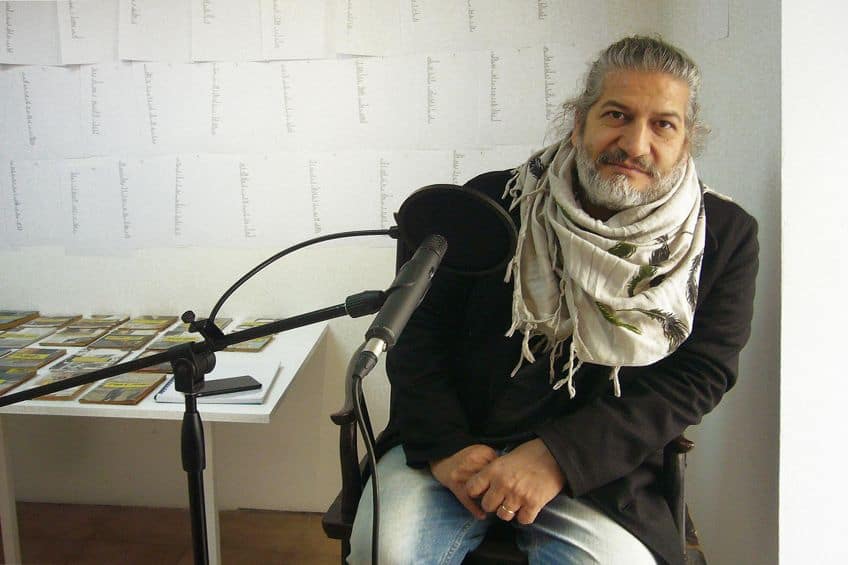
Armando Mariño (1968 – Present)
| Date of Birth | 30 September 1968 |
| Age | 55 years old |
| Place of Birth | Santiago de Cuba, Cuba |
| Nationality | Cuban |
| Art Movement | Contemporary art |
| Mediums Used | Painting, sculpture, and installation art |
| Famous Artwork | The Raft (La Patera) (2002) |
Armando Mariño, a luminary in the realm of Cuban art, emerges as a versatile force, seamlessly navigating the domains of painting, sculpture, and installation. Born in Santiago de Cuba, Mariño’s artistic journey unfolds as a profound exploration of identity, history, and the human condition. Renowned for his distinctive visual language, Mariño’s works often intertwine vivid colors with powerful symbolism, offering a reflection on the complex narrative of Cuban history. One of his most celebrated artworks, The Farmer’s Daughter (2012) stands as a testament to Mariño’s ability to merge the personal and political.
This poignant painting captures the turbulence of Cuba’s revolutionary period, encapsulating the artist’s nuanced perspective on the upheavals that shape societies.
Through a synthesis of form and concept, Mariño invites viewers into a contemplative dialogue, navigating the depths of collective memory and the ever-evolving tapestry of Cuban identity. As a sculptor and installation artist, Mariño further expands his artistic vocabulary, creating immersive experiences that invite introspection and dialogue. In the intricate dance between tradition and innovation, Armando Mariño emerges as a trailblazer, leaving an indelible mark on the canvas of Cuban art.
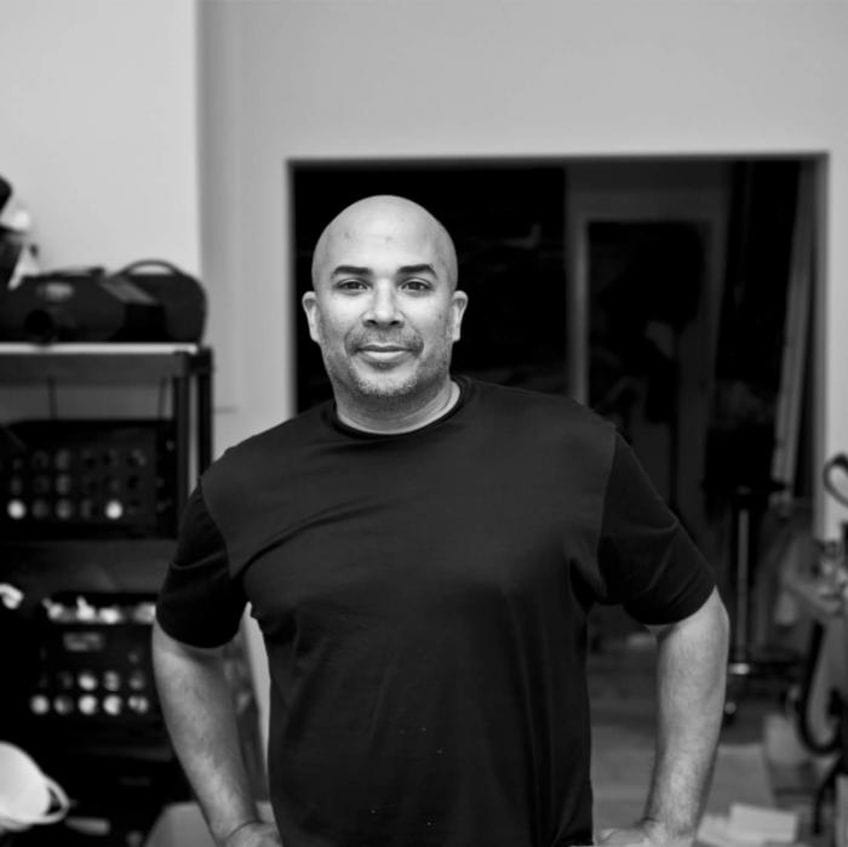
Tania Bruguera (1968 – Present)
| Date of Birth | 18 October 1968 |
| Age | 55 years old |
| Place of Birth | Havana, Cuba |
| Nationality | Cuban |
| Art Movement | Contemporary Cuban art and Political art |
| Mediums Used | Installation art, Performance art, and photography |
| Famous Artworks | Tatlin’s Whisper #5 (2007) |
Tania Bruguera, an influential figure in the realm of contemporary Cuban art, emerges as a provocateur who challenges societal norms and ignites dialogue through her immersive and politically charged installations. Born in Havana, Cuba, in 1968, Bruguera’s artistic journey unfolds as a dynamic exploration of power dynamics, freedom, and the intersection of art and activism. At the forefront of the global art scene, she pioneers the concept of “Arte Útil,” or Useful Art, advocating for art as a catalyst for social change.
One of her most notable works, Tatlin’s Whisper #6, exemplifies Bruguera’s commitment to activating public spaces. In this impactful piece, participants are invited to stand at a podium and express their thoughts freely, bridging the gap between art and civic engagement.
The whisper in the title refers to the potential risks faced by those who express dissenting opinions. By offering a platform for public expression, Bruguera challenges viewers to confront the nuances of power, control, and the fragile state of free speech in society. “Tatlin’s Whisper #5” transcends traditional artistic boundaries, becoming a dynamic and thought-provoking space for civic participation and reflection on the complex interplay between art, politics, and individual agency. Tania Bruguera’s unwavering dedication to art as a tool for societal transformation underscores her enduring impact on the contemporary art landscape, challenging audiences to reevaluate their roles within the broader social narrative.

Juan Roberto Diago (1971 – Present)
| Date of Birth | 1971 (specific date unknown) |
| Age | 52 years old |
| Place of Birth | Havana, Cuba |
| Nationality | Cuban |
| Art Movement | Afro-Cuban Abstraction |
| Mediums Used | Painting |
| Famous Artworks | Sin título (Untitled) (2015) |
Juan Roberto Diagol, a prominent figure in the contemporary Cuban art scene, distinguishes himself through a visual language that merges the personal and the political. Born in Havana, Cuba, Diago’s oeuvre serves as a compelling exploration of race, identity, and the socio-historical landscape of his homeland. As a leading exponent of the Afro-Cuban Abstraction movement, Diago draws inspiration from his Afro-Caribbean roots, infusing his works with a profound sense of cultural consciousness. One of his most renowned pieces, Sin título (Untitled, 2015), stands as a powerful testament to Diago’s ability to harness raw emotion and societal critique within his canvases. In this masterpiece, dynamic brushstrokes and bold use of color coalesce to convey a visual narrative that challenges preconceptions and delves into the complexities of racial and social dynamics.
Juan Roberto Diago’s artistic legacy resonates not only as a reflection of personal introspection but also as a mirror held up to the intricacies of Cuba’s cultural fabric.
Glenda León (1976 – Present)
| Date of Birth | 1976 (specific date unknown) |
| Age | 47 years old |
| Place of Birth | Havana, Cuba |
| Nationality | Cuban |
| Art Movement | Conceptual art |
| Mediums Used | Painting and installation |
| Famous Artworks | Habitat (2004) |
Glenda León, a prominent figure in contemporary Cuban art, navigates the intersection of the ephemeral and the enduring with a distinctive artistic voice. Born in Havana, Cuba, León’s multidisciplinary approach spans sculpture, video, and installations, crafting a narrative that transcends traditional boundaries. Renowned for her exploration of themes like memory, communication, and the transient nature of existence, one of León’s most iconic works is
Habitat (2004). Habitat serves as a poignant exploration of the intricate relationships between the natural and the artificial, the ephemeral and the transcendent.
In this piece, León transforms the familiar space of a room into a fictional representation of a natural world. The installation prompts viewers to question the authenticity of the reality we perceive daily, emphasizing the proximity of our immediate surroundings—the rooms we inhabit—and the broader concept of Earth as our home. By blurring the lines between the microexistence of the human being within their personal space and the magnificence of the Earth, León encourages contemplation on the level of awareness we possess about our connection to the planet. “Habitat” beckons us to reconsider the authenticity of our perceptions and the profound implications of recognizing Earth as our shared and singular home.
León’s art serves as a poetic reflection on the intangible aspects of the human experience, prompting viewers to delve into the complexities of memory and the fragility of our shared histories. Through her evocative creations, Glenda León continues to leave an indelible mark on the global art landscape, offering profound insights into the nuances of existence.
In the kaleidoscope of artistic brilliance emanating from the vibrant island nation, the legacy of famous artists from Cuba reverberates through the intricate strokes of Cuban paintings, embodying the essence of Cuban art. From the pioneers who navigated colonial influences to the contemporary visionaries shaping the landscape of modern Cuban art, the journey of art from Cuba is a testament to the resilience, diversity, and creativity embedded in the cultural fabric of this Caribbean jewel. The contributions of famous Cuban painters not only narrate the unfolding story of Cuba’s rich history but also transcend geographic borders, leaving an indelible mark on the global tapestry of artistic expression. As we explore the multifaceted realms of Cuban art, the dynamic interplay of tradition and innovation continues to captivate, inviting audiences to immerse themselves in the ever-evolving conversation sparked by the ingenuity of Cuban artists.
Frequently Asked Questions
Who Is the Most Famous Cuban Painter?
One artist who stands out prominently is Wifredo Lam (1902 – 1982). Lam is celebrated for his unique blend of Afro-Cuban imagery and European modernism, creating a distinctive visual language that has left an indelible mark on the art world. His works, such as The Jungle (1943), are widely recognized for their powerful symbolism and cultural significance, making Wifredo Lam a towering figure in Cuban art history. While opinions on the most famous artist may vary, Lam’s contributions continue to be celebrated globally for their impact and influence.
What Art Styles Are Famous in Cuba?
Cuba boasts a vibrant and eclectic art scene, encompassing various styles that reflect the nation’s rich cultural tapestry. One prominent style is Afro-Cuban Abstraction, which merges traditional African influences with contemporary aesthetics, exemplified by artists like Juan Roberto Diago (1971 – Present). The Vanguardia movement, prominent in the early 20th century, marked by avant-garde and modernist styles, includes artists such as Amelia Peláez (1896 – 1968) and Wifredo Lam. Additionally, Magical Realism has found resonance in the works of artists like Alicia Leal (1957 – Present), infusing everyday scenes with fantastical elements. Contemporary Cuban art often incorporates conceptual and performance elements, with artists like Tania Bruguera (1968 – Present) leading the charge in utilizing art as a medium for social and political commentary. These diverse styles collectively contribute to the dynamic and ever-evolving artistic identity of Cuba.
What Makes Cuban Art Unique?
Cuban art is uniquely characterized by its rich fusion of diverse cultural influences, blending European, African, and indigenous traditions into a vibrant and distinct visual language. The country’s tumultuous history and socio-political landscape has inspired resilience and creativity among its artists, resulting in a unique convergence of tradition and innovation. Cuban art often reflects the complex interplay between colonial legacies, revolutionary fervor, and a profound connection to the natural world. The prevalence of Afro-Cuban themes, manifested in art movements like Afro-Cuban Abstraction, adds a distinctive and powerful dimension to the visual narrative. Moreover, Cuban artists have been pioneers in conceptual and performance art, challenging traditional boundaries and engaging with societal issues. This dynamic blend of cultural diversity, historical context, and a spirit of innovation collectively renders Cuban art an unparalleled and captivating force within the global artistic landscape.
What Is the Most Famous Modern Cuban Art Piece?
One of the most impactful modern Cuban art pieces is Tania Bruguera’s Tatlin’s Whisper #5 (2007). This politically charged and interactive installation epitomizes Bruguera’s commitment to using art as tool to bring about social change. Participants are invited to come look at an art piece in a museum. Instead, they find two trained policemen on horseback instructing them to move around. The policemen use the bodies of the horses to move the crowd around. This art piece is an impactful commentary on power.
Nicolene Burger, a South African multimedia artist and creative consultant, specializes in oil painting and performance art. She earned her BA in Visual Arts from Stellenbosch University in 2017. Nicolene’s artistic journey includes exhibitions in South Korea, participation in the 2019 ICA Live Art Workshop, and solo exhibitions. She is currently pursuing a practice-based master’s degree in theater and performance. Nicolene focuses on fostering sustainable creative practices and offers coaching sessions for fellow artists, emphasizing the profound communicative power of art for healing and connection. Nicolene writes blog posts on art history for artfilemagazine with a focus on famous artists and contemporary art.
Learn more about Nicolene Burger and about us.
Cite this Article
Nicolene, Burger, “Cuban Artists – A Kaleidoscopic World of Creativity.” artfilemagazine – Your Online Art Source. November 30, 2023. URL: https://artfilemagazine.com/cuban-artists/
Burger, N. (2023, 30 November). Cuban Artists – A Kaleidoscopic World of Creativity. artfilemagazine – Your Online Art Source. https://artfilemagazine.com/cuban-artists/
Burger, Nicolene. “Cuban Artists – A Kaleidoscopic World of Creativity.” artfilemagazine – Your Online Art Source, November 30, 2023. https://artfilemagazine.com/cuban-artists/.


